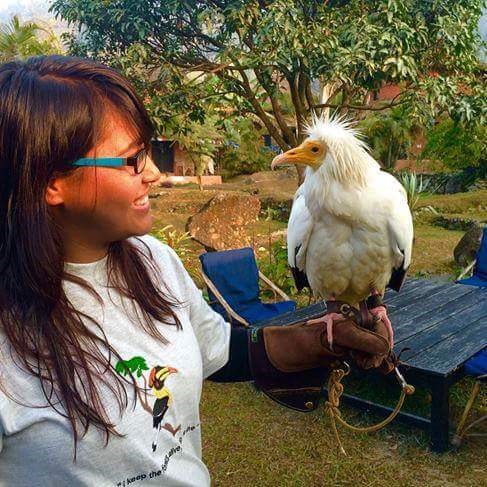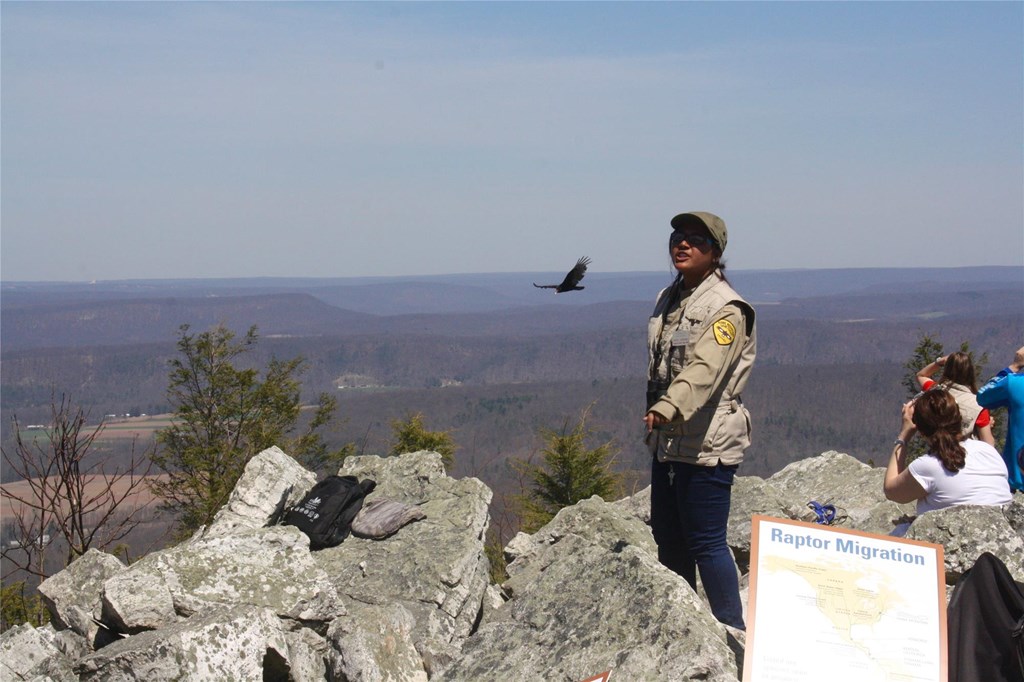A Girl in Conservation
Posted on in In the Field by Anisha Pokharel, 2016 Conservation Science Trainee

*This original article was written in 2017. A current update from Anisha is at the bottom of this blog.
Many people would think my childhood was spent close to nature, and that right from inception, I had decided to study conservation science given what came to be my active involvement in the outdoors. Actually, those things never occurred to me.
I was brought up in an outskirt of bustling Kathmandu valley. I was utterly aloof about "the wild" during my childhood, but as soon as I was exposed to various conservation awareness campaigns and research works, I completely immersed myself in the conservation of animals, especially birds and mammals.
Choosing forestry science for my undergrad was the turning point of my life that directed me towards conservation. Though regarded as "not-for-girls," because it requires walking through rough terrains and remote, physically challenging areas, this field of study has transformed and awakened me in many ways. Belonging to a country where a girl is hardly allowed to travel by herself, I have traversed almost 52 out of 75 districts and 4 countries in a year, which is a matter of pride to me as many of my girl friends have never been permitted to travel.
That is how my journey began—slow and steady. To be specific, my involvement in the Bird Conservation Nepal, Pokhara immensely helped me learn about birds. I conducted various bird watching programs, community outreach, and student awareness programs to increase awareness among people, regarding the importance bird conservation, especially vultures.

I then was selected to attend training on wildlife research techniques conducted by Friends of Nature Nepal and World Wildlife Fund in 2012, which infused within me a love for raptors. As a part of the training, we would go bird watching every day for 15 days and see steppe eagles, shikras, crested serpent eagles, and much more. This all made a strong impression on me.
Eventually, I got an opportunity to volunteer at The Parahawking Project, which provided me an avenue to learn about morphological and behavioral handling techniques regarding raptors. This inspired me to do my B.Sc. thesis on social behavior among vultures during feeding.
Following the raptors, I first attended an international student conference on conservation science (SCCB) in Bangalore, India last year, which gave an opportunity to connect and interact with many regional and global researchers. I also had the chance to attend some regional meetings on South Asian vulture conservation, which has been quite insightful towards my journey. Meanwhile, I also started to look for master’s degrees in the United States, which proved quite tedious and difficult, but absolutely worth it. We still lack research-oriented universities in Nepal, compelling aspiring researchers to study abroad, and I had been struggling to find a professor and lab openings.
Then Nepal was hit by a devastating earthquake. It was traumatizing as if the world was coming to an end, but going through such an ordeal had taught me an important lesson. "Just when the caterpillar thought it was the end of the world, it turned into a butterfly."

Soon after, I happened to connect with wildlife biologist Todd Katzner and Rick Watson of the Peregrine Fund. They recommended that I apply to Hawk Mountain Sanctuary's Traineeship. I quickly researched Hawk Mountain and realized it was a once in a lifetime opportunity. The Hawk Mountain Conservation Traineeship completely coincided with my interests and future endeavors. My passion to work for the conservation of these beautiful, yet less reputable, birds needed further exploration, knowledge and polishing, and this traineeship was the perfect program to fill the void. It broadened my existing knowledge and consolidated it with further training and exposure.
Though my journey to America wasn't that easy (I traveled during the Brussels airport attack incident), my stay at Hawk Mountain was one of my best experiences. Being from a small, poor country, it is regarded as a matter of big celebration to be selected to visit America. I was nervous, of course, but very excited about the trip.
I arrived at the Sanctuary as a Spring 2016 trainee, staying from late March until early July. I was enthralled while walking along the beautiful trail, beside mountain laurels, rhododendrons and trees like maples and oaks. I was expecting it to be like a busy, bustling city like New York City, and it turned out completely different—absolutely what I wanted.
Most of the birds I saw there were lifers for me. The excitement of seeing a new bird everyday is something I can't even express in words. Turkey and black vultures, bald eagles, and all other raptors were a treat to the eyes, and I greatly enjoyed the wide range of activities like migration count, ringing and banding the birds, nest monitoring, road surveys. I was honored to be trained by renowned and erudite scientists at the Acopian Center and amiable Hawk Mountain staff.
The unique thing about the traineeship, is that it provides a wonderful medium to exchange the educational and cultural differences by bringing together trainees from different parts of world. It helped me cope with the culture shock and bridge the gap.
The traineeship definitely has helped me further to stay focused on my aim, has empowered me with invaluable insights, and has gifted me with lifelong friends.

After returning from Hawk Mountain, I received the opportunity to be one of the counters at Khao Dinsor, Thailand, one of the best raptor migration pathways in South East Asia, also known as the Hawk Mountain of Asia.
Amid the challenging and highly patriarchal society, I have performed my best to defy all the manacles that could restrain a girl from striving for what she aspires in life, and I will keep on trying my best to be one of the few female wildlife conservationists in Nepal.
I have hiked through rough mountain terrain, sniffing scats and looking for pugmarks, often called 'Poopwoman." I have walked along the tiger's pugmark, chased by Arnee (wild water buffaloes) and rhinos in the southern forests. I have scanned vultures from close while they devour carcasses.
"You can't go if there are no other women in the team," they would say. "You can't go because society would think otherwise. No man would want to marry a woman who travels like a nomad. Don't you have any work to do rather than staring at the sky?"
These are the frequent comments always made in an attempt to make me stop, but I have not. I definitely have achieved a lot in comparison to many deprived girls of my culture, however, my thirst for knowledge and traveling is widening, even if it is not easily accepted. While I pursue my master’s degree in the United States, I will continue to contribute more towards the conservation of raptors, especially vultures in the South-Asian region where they face a stark declining reality. Plus, I will try my best to be a role model for aspiring female conservation scientists here in Nepal who are still facing many challenges.
Hawk Mountain provided me with the wings to soar high and the confidence to dream big, and I shall give all my efforts to make those at the Sanctuary boast with pride of my contributions in conservation science. I feel privileged to be a part of the Hawk Mountain family, to have encountered this beauty of nature and learned amongst the wonderful people who strive to make progress there. Hawk Mountain proved to be the epitome of the "School in the Clouds."

Update from Anisha:
I finished my master/s degree in May 2020, and my thesis was focused on prey selection by birds of prey. I was hoping to work for summer and then autumn migration, but Covid changed the course of actions, and I decided to move back to Nepal as I had missed being with my family. After some months of rest and celebrating Nepalese festivals, I travelled and trekked to some of the places in Nepal that I always wanted to visit. Since January 2021, I have been working as an intern at the National Trust for Nature Conservation based at Bardia National Park (in midwest Nepal) on biodiversity conservation. I have been working on the human-wildlife conflict database and some other projects here.
Excitingly, I also got accepted for a joint PhD position (UQIDAR) in Indian Institute of Technology Delhi, India, and University of Queensland Australia since February, which will focus on human-wildlife conflict mitigation and transboundary conservation work. So, it might be a little leeway from the direct raptor research, but I will still be looking for potential collaborations and conservation of raptors worldwide.